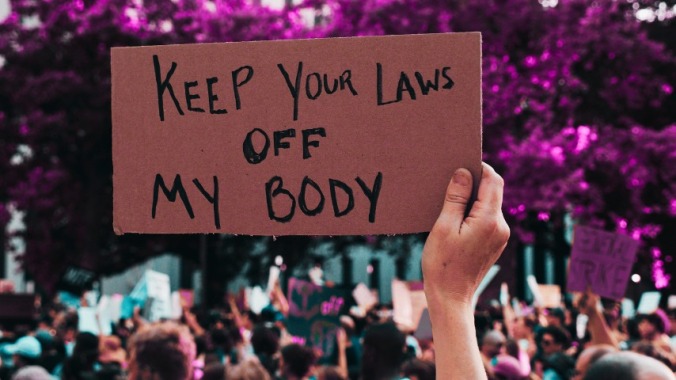Leaving Abortion to the States Has Been Chaotic. Florida & Nebraska Just Proved It’s Also Pointless.
For the past year, Trump and the GOP have patted themselves on the back for letting states decide on abortion rights, with Trump calling it a “beautiful thing to watch.” Let’s take a look at what actually happened.
Photo: Getty Images AbortionIn DepthPolitics
Donald Trump spent the last year campaigning on the lie that he’d continue to leave abortion up to the states—which has already led to a sharp rise in pregnancy-related criminal charges, women being denied life-saving emergency abortions, and the confirmed deaths of at least four women. But, regardless, this was Trump’s ostensibly generous concession to women: the consolation that, as one Georgia judge recently put it, our bodies and lives are “collectively owned community property” at the whim of a “majority vote.”
But in some states, the majority vote doesn’t always win, and in others, the proliferation of disinformation campaigns means voters barely understand what they’re voting for… or against. Abortion rights measures were on the ballot in 10 states—seven of them passed and three didn’t. Unfortunately, it’s not quite as simple as “not enough people voted for them,” because in Florida, Nebraska, and South Dakota, the abortion rights amendments were largely set up for failure by their state governments.
Let’s back up. Only 19 states allow voters rather than the state legislature to directly put measures on the ballot. Many states that don’t offer a direct citizen initiative process have enforced sweeping abortion bans since Roe v. Wade was overturned, including Texas, Georgia, Alabama, and Tennessee. And in the states that do allow voters to put measures on the ballot, the built-in challenges can be insurmountable.
In Florida, Amendment 4 did receive a majority vote, and a decisive majority too—57% of voters said they wanted a right to abortion enshrined in the state Constitution. But that didn’t meet the state’s required 60% threshold, so it was defeated. This threshold, which was adopted in 2006 after well-funded special-interest groups poured an outsized amount of money into the campaign in support of the constitutional amendment, didn’t even receive 60% of the vote itself; it passed with only 58%. This wildly anti-democratic requirement goes hand-in-hand with Gov. Ron DeSantis siphoning taxpayer dollars toward spreading disinformation about Amendment 4, threatening TV stations that aired its ads with criminal charges, and sending police to the homes of its supporters.
-

-

-

-

-

-

-

-

-

-

-

-

-

-

-

-

-

-

-

-

-

-

-

-

-

-

-

-

-

-

-

-

-

-

-

-

-

-

-

-








































